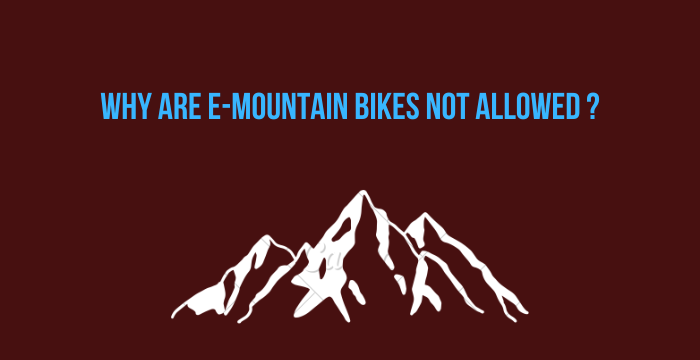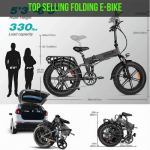Warning: Illegal string offset 'sponsored' in /home/balancingwheels.com/public_html/wp-content/plugins/show-affiliate-disclosure/show-affiliate-disclosure.php on line 50

As an ebike expert, I’ve seen the popularity of electric mountain bikes skyrocket over the past few years. From casual riders to professional athletes, more and more people are making the switch from traditional pedal-powered bicycles to ebikes that offer freedom and excitement. But despite their growing popularity, many trails still don’t allow them. So why aren’t electric mountain bikes allowed?
In this article, we’ll explore some of the reasons why these powerful machines often find themselves unwelcome on popular trails and paths around the world. We’ll also look at how you can make your case for allowing ebikes in certain areas where they’re currently prohibited. Finally, we’ll take a closer look at how ebikes actually benefit both trail users and nature itself when used responsibly.
If you’re an ebike enthusiast who’s looking for ways to get out into nature without worrying about being turned away by local regulations or park rules then keep reading! You may be surprised at what kind of impact you can have simply by using your voice to advocate for greater access to outdoor spaces especially those designed with ebikers in mind.
Contents
Why Are E Mountain Bikes Not Allowed?
Overview of E-Bikes
E-bikes, also known as electric bikes or pedal-assist bicycles, are motorized bikes powered by a battery. They offer riders the freedom to go further and faster while still enjoying all of the benefits of traditional cycling. E-bikes provide an additional layer of assistance to regular cyclists, allowing them to get up hills with ease and ride longer distances than they would be able to do otherwise.
The addition of a battery makes it possible for users to reach speeds of up to 25 miles per hour much higher than what could be achieved on a regular bike alone. This allows cyclists to cover larger distances in shorter amounts of time without relying solely on their own energy reserves. Not only is this great for commuters looking to save time but it can also make long distance rides more enjoyable and less strenuous.
Regulations and Restrictions
Regulations and restrictions regarding e-mountain bikes can be quite confusing. As an ebiking expert, I’m here to clear the air.
Let’s take a look at why these motorized mountain bikes are not allowed on certain trails:
- Mountain bike regulations vary from state to state or even county by county.
- Some areas have laws that restrict where you can ride your electric bike for example, some areas don’t allow them in parks or other public lands.
- E-bikes may also face age limitations; many regions don’t allow anyone under 16 years of age to ride one.
- In addition, there could be trail classifications that prohibit their use (such as single track).
As you can see, it’s critical to understand the specific rules and regulations surrounding e-bikes before hitting the trails with yours – failure to do so could result in hefty fines and unwanted legal issues! So make sure you know what is permitted in your area before hitting the dirt.
Potential Environmental Impact
As an ebike expert, it’s important to consider the potential environmental impact of these electric bikes. While they do produce fewer emissions than traditional bicycles or cars, the electricity used to charge them still has consequences for the environment. E-bikes have been growing in popularity recently, and with that comes increased concern over their pollution levels. In some places, regulations are put in place to ensure that electric bikes don’t add too much to air and noise pollution levels.
At the same time, there is also a huge opportunity here for e-bikers to make use of eco-friendly technology and practices while enjoying their rides. By investing in sustainable charging solutions like solar panels and renewable energy sources, as well as conserving battery life through careful maintenance, riders can enjoy all the benefits of e-biking without harming the environment around them. We should encourage more people to try out this mode of transportation so we can continue seeing its positive effects on our planet!
Conclusion
As an ebike expert, I am often asked why certain areas are restricted to the use of electric mountain bikes. It is true that there can be some potential environmental impacts associated with the operation of these vehicles, but with proper education and ethical riding practices this can be minimized.
Overall, it’s important for us as ebikers to understand any restrictions in place in order to ensure we don’t cause damage or put other riders at risk. By understanding the regulations and respecting our environment, we will continue to enjoy all the benefits of ebiking without negatively impacting our trails and ecosystems.
In conclusion, if you have questions about where you’re allowed to ride your e-mountain bike make sure you do your research ahead of time! With a little knowledge and effort on our part, we can help keep everyone safe while still enjoying the great outdoors on two wheels.


